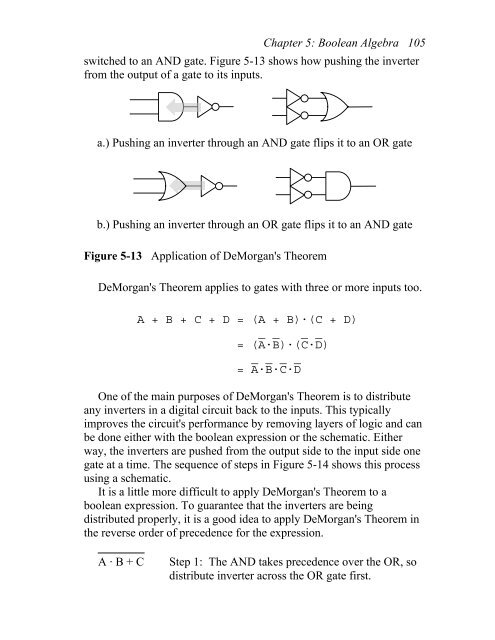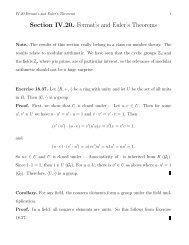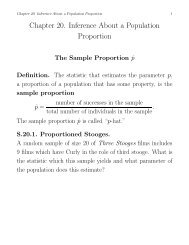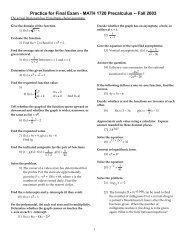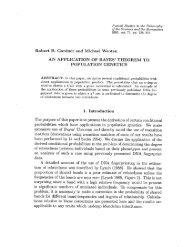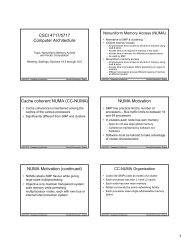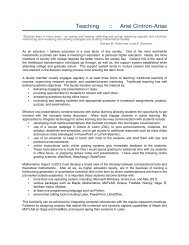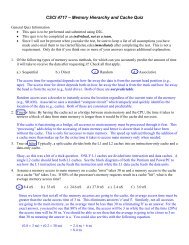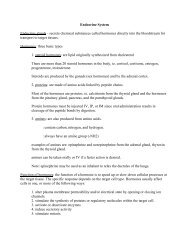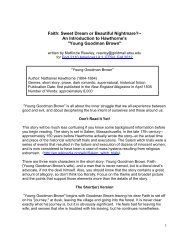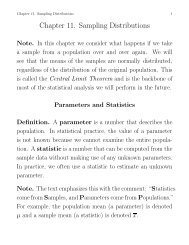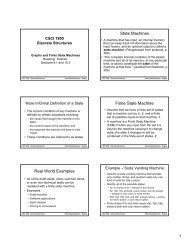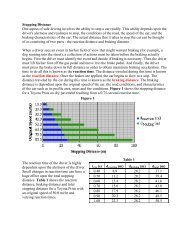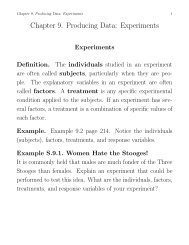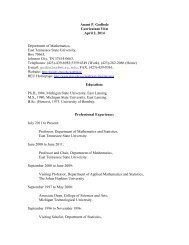Boolean Algebra - Etsu
Boolean Algebra - Etsu
Boolean Algebra - Etsu
You also want an ePaper? Increase the reach of your titles
YUMPU automatically turns print PDFs into web optimized ePapers that Google loves.
Chapter 5: <strong>Boolean</strong> <strong>Algebra</strong> 105switched to an AND gate. Figure 5-13 shows how pushing the inverterfrom the output of a gate to its inputs.a.) Pushing an inverter through an AND gate flips it to an OR gateb.) Pushing an inverter through an OR gate flips it to an AND gateFigure 5-13 Application of DeMorgan's TheoremDeMorgan's Theorem applies to gates with three or more inputs too.A + B + C + D = (A + B)·(C + D)_ _ _ _= (A·B)·(C·D)_ _ _ _= A·B·C·DOne of the main purposes of DeMorgan's Theorem is to distributeany inverters in a digital circuit back to the inputs. This typicallyimproves the circuit's performance by removing layers of logic and canbe done either with the boolean expression or the schematic. Eitherway, the inverters are pushed from the output side to the input side onegate at a time. The sequence of steps in Figure 5-14 shows this processusing a schematic.It is a little more difficult to apply DeMorgan's Theorem to aboolean expression. To guarantee that the inverters are beingdistributed properly, it is a good idea to apply DeMorgan's Theorem inthe reverse order of precedence for the expression.A · B + CStep 1: The AND takes precedence over the OR, sodistribute inverter across the OR gate first.


